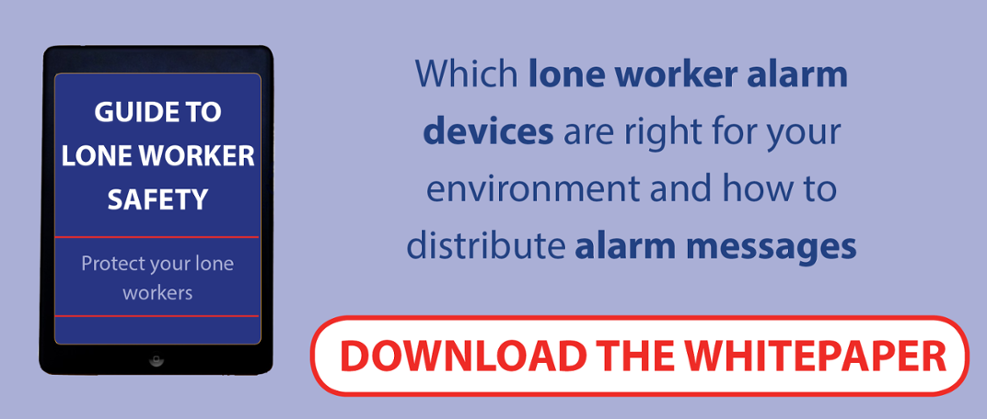
Statistics indicate that, after substantial downward trend over the long term, the number of fatalities in the workplace has started to level off, and is now beginning to rise. This article explains the challenges involved in ensuring lone worker safety in a variety of sectors, and then elucidates how technology can help managers to make their workplaces as safe as possible. Using technology to our advantage, we will be able to reverse this worrying upward trend in workplace fatalities.
The problem: workplace fatalities can occur in any industry, with manufacturing the third most dangerous sector to work in
Recent news items have highlighted the fact that workplace fatalities have risen drastically in the past few years. In October 2017, for example, the Guardian profiled the issue in Northern Ireland, which has seen a 33% increase in workplace fatalities in the past year, most of them in the farming and construction industries. As the latest statistics from the HSE demonstrate, 137 workers died in the workplace in the UK in 2016-2017. The HSE has also conducted a sector-base analysis, which established that most of these fatalities (30 in total) occurred in the agricultural sector, though the construction industry was not far behind with 27 fatalities occurring in the period under discussion. The manufacturing and transportation and storage industries likewise show worrying levels of fatal accidents and incidents, with 19 and 14 occurring respectively in each of these sectors in the past year.
Nevertheless, workplace fatalities can (and do) occur in any sector of the economy. Whilst maintenance engineers and workers in manufacturing plants have to deal with potentially hazardous machinery, for instance, public sector workers can be confronted with violent customers. Wind farm operators are also a group of workers that can be particularly at risk from fatality as a combination of unstable weather conditions and heavy-duty machinery increase the risk of injury or even fatality. Wind farm operators also tend to work alone in remote locations, which further exacerbates the risks that they run. This brings us on to our key topic of discussion: the challenges associated with lone working and the enhanced risk of workplace fatality that lone workers can run when they are not adequately supported.
The challenges associated with lone working
Lone workers face specific challenges, which tend to make their work environments more dangerous than the workplaces of employees who are working in groups. Action can quickly be taken to manage any accident that occurs when a worker is in a group of employees who have been well trained in risk management, first aid, and health and safety. A lone worker who suffers an accident, however, faces the following key difficulties:
- Difficulty in alerting their manager or other employees regarding the accident.
- Difficulty in being discovered immediately if they are unconscious: on wind farms and other remote locations, or in manufacturing plants after hours, a lone worker who has had an accident may not be found until the next day.
- Difficulties with staying abreast of imminent changes to weather conditions and other factors that could affect the safety of their work environment.
All of these challenges put lone workers at increased risk of suffering a fatality in the workplace. Even if two workers are working together in a remote location and one suffers an injury, the situation is not ideal without mobile connectivity: the remaining employee must decide whether to tend to their companion's injuries themselves, or leave their companion alone as they go to find help. Fortunately, there is a clear solution to these problems in the form of a mobile communication platform. Organisations such as the IPAF are already working to put in place regulations such as height safety restrictions in order to improve safety conditions for lone workers. Connected communication systems can thus become part of a whole package of safety tools that, though they can be directed specifically at aiding lone workers, will benefit the whole workforce.
How technology can enable you to overcome these challenges and provide excellent levels of lone worker safety.
A mobile communication system is very easy to integrate with your existing health and safety protocols. Using phones or radios over privately managed network to connect lone workers, with management staff and trained operators, has numerous benefits including:
- Enabling managers to liaise with lone workers regularly to provide support and to ensure they are safe.
- Enabling lone workers to tell their colleagues instantly if they have run into any difficulties.
- Enable users to raise alerts with mobile handsets fitted with panic buttons or with tilt sensors
- Enabling managers to call the emergency services if a lone worker is unresponsive.
- Ensure staff can respond to events as they happen, wherever they are working.
It is clear that communication systems with lone worker functionality make the workplace a much safer and more efficient environment for lone workers. . The next section tells you where you can download our free resources that will help you to successfully implement lone worker monitoring and alert systems.
Not sure where to start? Keen to find out more about creating alarm systems for your lone workers? Download our free, comprehensive guide.





